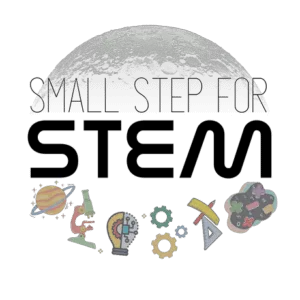Disclosure: this post contains affiliate links, which means I may receive a commission if you click a link and purchase something at no extra cost to you. Please check out our policies page for more details.
for more details.
April showers bring May flowers, so it sounds like the perfect time to build your own rain gauge!
Building a rain gauge is a science and engineering experiment that involves building a simple rain gauge from a few household supplies and measuring the amount of rain that falls. You can talk to your child about building and recycling things, as well as teaching measurement and the water cycle.
Let’s start measuring the rain!

How to make the Downpour Detective rain gauge experiment
Supplies you will need
For this experiment, you’ll need:
- Empty 2-liter bottle
- Scissors
 or knife
or knife - Marker
- Ruler

- Small rocks
 or coins
or coins - Optional: stickers or things to decorate the gauge

Here’s a fun kid’s book about weather that would be excellent to accompany this experiment!
Before you start
Please be careful when cutting open the plastic bottle!
Instructions
Here is how to do this experiment with your child:
Step 1: Clean the 2-liter bottle
Start by removing the label on the 2-liter bottle and cleaning any residual liquid on the inside of the bottle.
Tip: use a hair dryer to remove the label for a cleaner removal.
Step 2: Cut the bottle
Cut the 2-liter bottle below the curved top portion of the bottle so you have only straight sides on your rain gauge.

Step 3: Place your small rocks or coins into the bottle
Place a few small rocks or coins into the bottom of the rain gauge. These will provide some weight to the bottle in case there are strong winds to knock over your rain gauge.

Step 4: Calibrate your rain gauge
With the coins or rocks in the bottom of the rain gauge, add enough water to bring the water level to the straight edges of the bottle (where the curve from the bottom straightens out to the body of the 2-liter).
Mark that water level with a “0”. That will be our baseline for measuring.
Using your ruler, mark every 0.5″ on the side of the rain gauge.


Step 5: Place top of 2-liter upside down into gauge
Take the cap off of your 2-liter bottle top and place it upside down into the rain gauge.
This will act as a funnel for the gauge.

Step 6: Record the rain!
Next time it rains, stick your rain gauge outside and record how many inches you get!
The STEM behind the Downpour Detective rain gauge experiment
This experiment teaches:
- Measurement and data collection
- The water cycle
- Observation
How it works
This experiment involves building an inexpensive rain gauge by cutting open a 2-liter bottle and collecting rain in it.
The top of the cut bottle acts as a funnel for the rain, and the rocks act as a weight to help hold the rain gauge down in case of strong winds during the rainstorm.
Before the rainstorm, we calibrate the rain gauge by adding a small amount of water and drawing a “0” on the side of the rain gauge as a baseline, then measuring an inch up the side and marking it.
This experiment is great for measuring practice, talking about the weather and the water cycle, and observing changes over time!
Measurement and data collection
Many kids start to learn about measuring with a ruler around the age of 8. If your child is at or near that age, they should be able to understand how to use a ruler to measure the side of the bottle.
Even if they’re younger than 8, it’s never too early to start talking about measurement with your child. A ruler may be a challenging concept for them, but you can certainly use other things to measure in units.
All of that to say: get your child involved with the measurement process of this experiment!
The water cycle
By observing how rain falls and is collected, kids can get a hands-on understanding of the water cycle and how it impacts their environment.
The water cycle is the path that all water follows as it moves around the Earth in different states (solid, liquid, and gas).
Of the many processes in the water cycle, we are observing two in this experiment: evaporation and precipitation.
Precipitation is water (in liquid or solid form) that falls from the clouds and is what we are collecting in our rain gauge. It’s one of the three main steps in the water cycle.
Evaporation is the process in which liquid turns into a gas. It’s another of the three main steps in the water cycle. We might see this in our experiment if we leave our rain gauge outside in the sun and our water level depletes.
Observation
There is something to observe whether it is raining or not in this experiment!
The main observation we will make is how much rain is falling during a rainstorm. We can also observe how much rain we get over a specific period of time (say, a few days).
We can also observe how much water we lose in our rain gauge, if we leave it outside during a sunny afternoon. Does the water line move below our baseline mark? Why did that happen?
